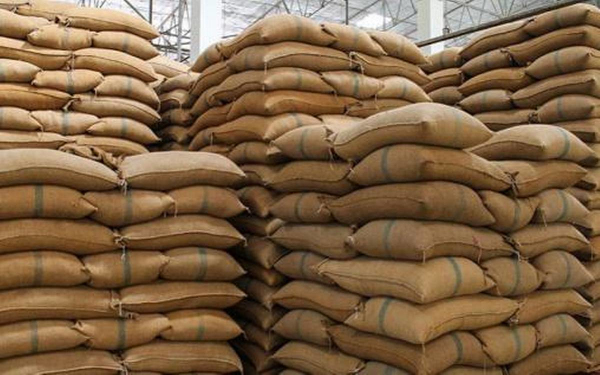As India battles the COVID-19 outbreak, it does have a cushion in the stocks of grain, pulses, oilseed and sugar.
The governments of Uttar Pradesh, Delhi, Kerala, Rajasthan, Karnataka and Punjab have already decided to deliver free rations in advance to poor and vulnerable sections such as daily wagers, rickshaw pullers and the like.
The said cushion enables more. By official estimates, the stock of foodgrain (wheat and rice) on March 10 was 58.49 million tonnes (mt), much more than required as a buffer in normal times. Also, there are stocks of around 3 mt of pulses, 1.1 mt of oilseed and 4 million tonnes of sugar.
That 58.49 mt of grain can enable the distribution of a full year’s quota in advance to all ration card holders and beneficiaries of other welfare schemes. That is after assuming not a single grain is added on to the central pool from April 1. The reality is that this stock position is bound to get bigger — wheat procurement will start in full swing from next month and the crop size in 2020 is estimated at an ell-time high of over 106 mt.
This has given enough confidence to the Centre for allowing states to lift their quotas of ration stock for six months in advance.
In 2018-19, around 57 mt of wheat and rice was distributed in the country through the ration shops network. That included grain for schemes such as National Food Security Mission (NFSM), Mid-day Meal Scheme, Integrated Child Development Scheme (ICDS) and the Annapurna Yojana, apart from the needs of defence forces.
In the case of pulses, officials said central agency Nafed has around 3 mt. Half of this is chana dal (Bengal gram) and this can be immediately offloaded in the market through ration shops if the need arises. “Chana can be consumed in multiple forms. Except arhar (red gram), which we have and needs some amount for processing, all other pulses in our stock are ready for consumption,” a senior Nafed official said.
In the case of oilseed, one problem is that processing has to be quick, as they need to be converted into the edible form. This could mean some supply disruption. Even so, the oilseed stock with the government is around 1.1 mt. Of this, 800,000 tonnes is groundnut seed and the rest is of mustard. Mustard seed’s conversion into oil is easier and quicker than groundnut’s.
In the case of wheat and rice, so far most state governments have decided to distribute free to vulnerable sections. That means the states would bear the expenses.
Govt decisions
UP: Free one-month ration for almost 16.5 million poor
Delhi: Monthly allocation per head of wheat and rice raised to 7 kg, from 5 kg, without any charge
Pune city: Three months’ ration in advance to needy
Kerala: Free foodgrain to the vulnerable
Rajasthan: 10 million families below the poverty line (BPL) to get free wheat for two months in advance. Food packets with essential items for people outside the NFSA ambit
Karnataka: Two months’ quota of 10 kg rice and 2 kg wheat for each BPL family, free of cost
Source: Business Standard
Image Courtesy: Business Line
You may also like
-
Trade Connect E-platform For Exports Is Single Window, Fast, Accessible And Transformational: Shri Piyush Goyal
-
Dot Simplifies Approval Processes For Telecom Licenses And Wireless Equipment
-
Coal Production and Supply Trends on Positive Trajectory
-
Union Minister To Release Booklets On Promotion Of Indigenous Species & Conservation Of States Fishes
-
2nd India-Japan Finance Dialogue held in Tokyo on 6th September, 2024
